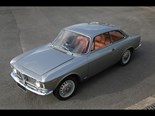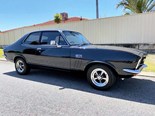Lancia Astura Farina Cabriolet (1938) Review
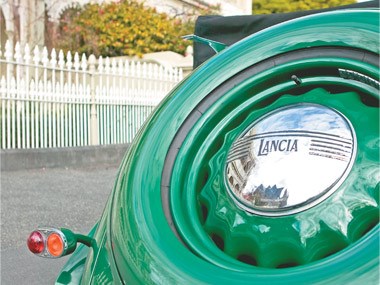 1938 Lancia Astura Farina Cabriolet
1938 Lancia Astura Farina Cabriolet

 1938 Lancia Astura Farina Cabriolet
1938 Lancia Astura Farina Cabriolet

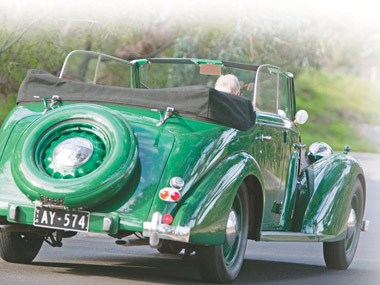 1938 Lancia Astura Farina Cabriolet
1938 Lancia Astura Farina Cabriolet

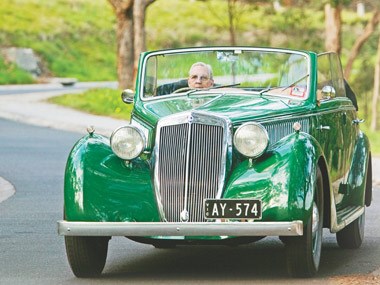 1938 Lancia Astura Farina Cabriolet
1938 Lancia Astura Farina Cabriolet

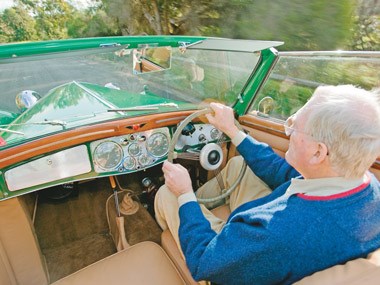 1938 Lancia Astura Farina Cabriolet
1938 Lancia Astura Farina Cabriolet

 1938 Lancia Astura Farina Cabriolet
1938 Lancia Astura Farina Cabriolet

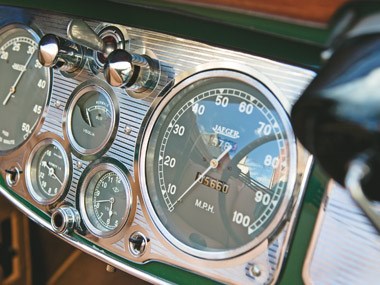 1938 Lancia Astura Farina Cabriolet
1938 Lancia Astura Farina Cabriolet

 1938 Lancia Astura Farina Cabriolet
1938 Lancia Astura Farina Cabriolet
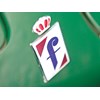
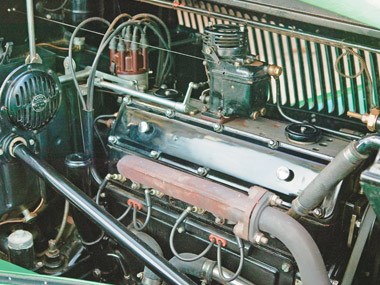 1938 Lancia Astura Farina Cabriolet
1938 Lancia Astura Farina Cabriolet

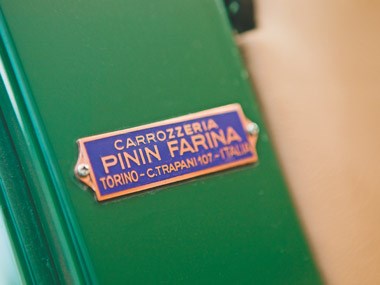 1938 Lancia Astura Farina Cabriolet
1938 Lancia Astura Farina Cabriolet

 1938 Lancia Astura Farina Cabriolet
1938 Lancia Astura Farina Cabriolet

 1938 Lancia Astura Farina Cabriolet
1938 Lancia Astura Farina Cabriolet
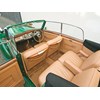

|
|
1938 Lancia Astura Farina Cabriolet
|

|
|
1938 Lancia Astura Farina Cabriolet
|

|
|
1938 Lancia Astura Farina Cabriolet
|

|
|
1938 Lancia Astura Farina Cabriolet
|

|
|
1938 Lancia Astura Farina Cabriolet
|

|
|
1938 Lancia Astura Farina Cabriolet
|

|
|
1938 Lancia Astura Farina Cabriolet
|

|
|
1938 Lancia Astura Farina Cabriolet
|

|
|
1938 Lancia Astura Farina Cabriolet
|

|
|
1938 Lancia Astura Farina Cabriolet
|

|
|
1938 Lancia Astura Farina Cabriolet
|

|
|
1938 Lancia Astura Farina Cabriolet
|
Bold beauty: Lancia Astura Farina Cabriolet. The story of this Art Deco wonder's restoration reads like an epic opera - but after three decades, it’s finally on song.

|
|
1938 Lancia Astura Farina Cabriolet
|
1938 Lancia Astura Farina Cabriolet
[Sep 2008] If they could talk, there are some cars that seem to say 'make way'. Bugatti's majestic Royale and the intimidating Mercedes-Benz 540K easily come to mind. And in their esteemed company (if not in their astronomical price range) from Italy comes this glorious creation: Behold the mighty Lancia Astura.
It's from an age when, if you could afford it, you could be driven around like the nobility or a Hollywood star. With a 3475mm wheelbase and a total length of 4840mm, the Astura was fit for a king, or at least Il Duce (Mussolini). It was also expensive - the in 1935 standard saloon cost a whopping £895 in England.
Our featured Astura is a fourth series model, one of only 426 built and the only one known to be in Australia. It was first purchased in 1938 for the use of the Italian Consul in London and was originally, in keeping with all Lancias until around 1955, right-hand drive.
The car was imported from the UK by its owner Peter McAdam, who retired to Toowoomba, Queensland in the late-1960s. But he died before the car became widely known in Lancia circles. It was inherited by his nephew from whom the current owner, Peter Renou, bought it in 1971. Renou's friend and Lancia specialist, Clive Beattie, did the negotiations for the purchase, made the acquisition and drove the car home to Melbourne from Brisbane.
It was said to have been "completely restored" in the UK but as Renou was to find out, the job was hardly satisfactory. The Melbourne doctor kept it in a drivable condition for a year to see if it was worth restoring. In 1972, he decided to take the plunge and bring the Cabriolet back to its former glory. Little did he know it was to be a more than three-decade job!
"Although it looked good superficially, it was in a terrible state: totally worn out, mostly from a lack of maintenance, and corrosion," says Renou. "But it was a lovely car to drive with light controls - particularly the steering - precise handling and excellent brakes.
"It's a beautiful car, designed by Pinin Farina at the height of his powers. I made the decision to rebuild it and dismantled it, but horror upon horror was revealed at every stage."
The car's substantial platform-type chassis is built from sheet steel and the engine bay side panels, firewall, scuttle, A, B and C pillars and various body panels are welded to it. It is very light and strong - but also very rust-prone. When Renou inspected it, he couldn't believe how badly it had been 'repaired'.
"The chassis is three inches deep and was very badly rusted; about the bottom inch had rusted away. It was so bad under the left windscreen pillar, that it was close to breaking. The process had been accelerated by the previous 'restorer' pop riveting aluminium sheets over the whole of the chassis bottom plate to cover the rust holes."
Renou stripped and mounted the chassis on a vertical frame, unroofed the left side down to sound metal with the help of Clive Beattie and his oxy torch, then sandblasted and painted it with zinc-rich primer. Folded sheet steel sections were laid over the chassis side rails and stiffeners, stick-welded and primed. The process was repeated for the right-hand side. Finally, a new bottom plate was welded on by puddle-welding through drilled holes.
The narrow angle 2972cc V8 engine's head and block are cast iron with an aluminium crankcase, atop of which sits a twin-choke carburettor.
"The crankshaft had been reground previously and looked sound until it came to offering it up to the block," says Renou. "It was fouling the screw-type oil seal and, on mounting it between centres; we found the main journals had been ground .0075 inch off centre." Luckily Renou had acquired a spare engine with a good crankshaft, so it was reground and used.
"We bored the block to 76mm and new pistons were made by Venolia. We also raised the compression ratio from 5.4:1 to 7.3:1 and tidied up the combustion chambers in the process."
More dynamo output was required, so the original was replaced with one from a VW and is ventilated by a concealed fan mounted on the coupling between the dynamo and water pump. The starter was in good shape and just needed a tidy-up.
New engine exhaust pipes were fabricated in mild steel - Renou didn't like stainless steel and its blatty sound - and the engine was ready to go.
Renou says power is up on the original and the Astura cruises happily at up to 110km/h. It comes at the price of 16.5L/100km though.
"The wiring was a concern, as everything passed through the ignition/light switch - a sitter for voltage loss," he says. "I wired the dynamo directly back to the battery-post and did the same for two headlight relays. I duplicated the original wiring in 4mm wire and had the loom braided by Rod Smith."
The heavy circuits, including each of the four headlight filaments, turn indicators, stoplights and horn are now solenoid-controlled via heavier wiring. All earth connections from the engine bay, headlights and the dashboard are wired back to an isolating switch in the battery negative lead and the rear lights are earthed to a common good earth on the chassis. The fuel gauge sender is earthed directly to the fuel gauge electronics to reduce electrical interference.
The gearbox has four forward speeds; first and second are sliding pinions, third is constant mesh and fourth is direct drive. Third and fourth speeds are engaged by face dogs. Renou says the engagement of third and fourth speeds is very easy and makes synchromesh unnecessary.
Renou replaced the single-plate clutch with a diaphragm pressure plate from a V6 Holden. The driven plate was made up with a BMW centre, which has the same spline as the Astura.
Being heavy, the car had spent much of its life in second gear (Renou says that should change with the increased compression ratio) so the second-speed gears were noisy and worn through. A new second-speed gear set was made and the bearings were all replaced. The other gears were all in good condition.
A new tailshaft was fabricated by Ron Hastings using a Holden unit as the basis.
The Astura has traditional Lancia front suspension, while the rear layout is by live axle with conventional semi-elliptic springs. These had sagged, so they were reset and Renou also created a new rear axle on a friend's Victor lathe.
The fourth series Astura has Lockheed hydraulic brakes - 15-inch finned aluminium drums with cast iron liners; the handbrake is cable-operated.
"The wheels specified for the fourth series were a disc-type by Fergat with 16 x 45 rims. My car had Michelin Bibendum wheels with a well on one side only for mounting the tyre, so the spokes were longer on one side than the other. God knows why those Gallic engineers dreamed up such a whacky idea. Think of the extra work rolling the rim, let alone different lengths of spokes."
The original rims were damaged; 18inch tyres had been used and, being larger than 450mm, had peeled off. Renou had the rims machined off and 18inch MkIV Jaguar rims welded on about 30 years ago. The Jag rims had a problem though; they pinched the tubes, which frequently deflated. There was a reinforced Dunlop tube available at the time to deal with this.
"Several years ago, 45 x 16 Michelin covers became available with the pre-war tread pattern and modern construction. I had 45 x 16 rims rolled in New Zealand and they did a very nice job. Ian Drysdale, of V8 motorbike fame, machined the rims off and a friend of his, welded on the new rims. Ian told me only about half the welds from the earlier job had penetrated and, where it was obvious, they had covered the deficiency with solder. They were also off-centre and extremely dangerous. The wheels are now true and back to original specifications. The Michelin tyres look the part too."
To finish off the look, Renou sourced original-looking Art Deco hubcaps.
The original instruments include a Jaeger speedometer and rev counter, a clock, a fuel gauge and an oil pressure gauge in a steel instrument panel, surrounded by three chromed escutcheon plates engraved with an Art Deco pattern.
Ken Day restored the instruments, including making new dial faces and modifying a modern temperature gauge to match the others. The speedometer was carefully calibrated after measuring the rolling tyre circumference and the overall drivetrain ratio of wheel to speedometer drive.
"The fuel gauge had been replaced by one from a Rover and a modern fuel gauge sender had been fitted to the tank after enlarging the orifice (rather crudely). The original system was mechanical and I have never seen one intact and working.
"I hit on the idea of using a small servomotor of the type used in model aircraft to drive the controls. I mounted this on the back of the gauge with a link to the rack and pinion of the gauge. Bill Smith and a young friend designed and built the electronics to drive it."
Renou overhauled the ignition/light switch, re-engraving them before plating. The dash lamps were missing and the dynamo indicator light cover was split. Renou made replicas and made another indicator light for the high beam.
"Finally the original, beautifully engraved escutcheon plates had been damaged beyond repair by ham-fisted buffing by the chrome platers. We had to make replicas and it was a very expensive process. It took years to find an engraver to even take it on."
The Pinin Farina body was a catalogued model, but it is believed few were made. It was a design favoured by Mussolini who had similar bodies fitted to his fleet of Asturas and Alfa Romeos. Some of the bodies on those cars were longer than Renou's, with a pair of jump seats; the back seats behind the rear axle meant the tonneau was mounted high, German-style, with two side-mounted spare wheels in the front mudguards.
"The shorter body in my car looks better and the spare wheel is mounted on the boot lid. The hood drops (neatly) when down and the windows wind up so the car is snug like a saloon when the hood is up."
When examined closely, the body on the Astura was beyond repair. Only the bonnet top and sides, inner valances of the engine bay, firewall and boot floor were salvaged. The body is all steel over a wooden frame, except the bonnet top and sides which are aluminium. The previous repairs were disgraceful, says Renou.
"The bottoms of the doors were rusted and the frames rotted, so they put a saw through the door one-fifth the way from the bottom and pop-riveted an aluminium skirt in place, then bogged and painted."
Gary Tishler rebuilt the body with a steel frame replacing the original wood. It is heavier, but much stronger. The doors are both hung from a reinforced fabricated steel B pillar, which is welded to the chassis. Tishler forged the door frames out of sheet steel before skinning them. He replicated all the cut-outs and grooves for mounting the hinges, window mechanism and locks in the steel frame.
The window glasses were removed from their aluminium frames as there was some corrosion and were re-polished. The windscreen glass is mounted in an aluminium frame, which is hinged at the top to allow it to open. However, there is no mechanism for parking the bottom-mounted windscreen wipers off the glass so Renou has made them non-opening. New laminated glass was fitted at the front and the rear Perspex window was replaced with clear acrylic.
The window winders and doorknobs are made from attractive pre-war plastic. Originally ivory in colour, they have oxidized to an orange-brown. Renou had only three and these had damaged threads so Lloyd O'Brien, a dentist friend, cast eight new ones in acrylic.
The decoration on the car includes the radiator grille, chrome mouldings on the 68 louvres on the bonnet sides and a single moulding strip along each side of the car from behind the rear door to just behind the radiator grille. This moulding has a wavy pattern on its surface, which had been damaged by buffing. Pittards, preserving the remaining pattern, replated them.
The painting was done by Peter McKinnon. A 1960s Fiat mid-green was chosen with a slightly paler shade above the moulding line in the doors and bonnet top. Renou admits the new colour is much nicer than the original maroon, so beloved by the Italians in the 1930s.
Bob Gilbert trimmed the car in beige leather and rebuilt the seats and hood. The seat frames needed major repairs and the runners came from a Ford Falcon.
The hood bows and mechanism were in a bad way and it took much work to repair the intricate spring-assisted mechanism and to get it operating without fouling. The hood is lined and the outer material is a black 'Mercedes'-style material sourced from the US.
Renou has owned a string of special Lancias, beginning with a B20 Aurelia he purchased as a 26-year-old in the mid-'60s and has been obsessed with things mechanical all his life, starting with his first project, an Alfa Romeo Special, at the age of 16. But it's this Astura which has dominated much of his adult life.
"This car has been foremost in my mind for more than three decades and its restoration is the best job I have ever done. I am eternally grateful to all (my helpers) for their invaluable assistance. Without them, the job would not have been done."
SPECIFICATIONS
1938 Lancia Astura Farina Cabriolet
BODY: four-door cabriolet
WEIGHT: 1750kg (approx)
DRIVETRAIN: front eng, RWD
ENGINE: 3.0-litre OHC V8
TRANSMISSION: four-speed manual
POWER: 82hp
PERFORMANCE: 128km/h top speed
PRICE WHEN NEW: £895 (standard saloon in UK, 1935)
*****
More reviews:
> Past blast: Lancia Aurelia GT review here
> 1966 Lancia Flaminia GTL 3C coupe review here
Unique Cars magazine Value Guides
Sell your car for free right here
Get your monthly fix of news, reviews and stories on the greatest cars and minds in the automotive world.
Subscribe

.jpg)

